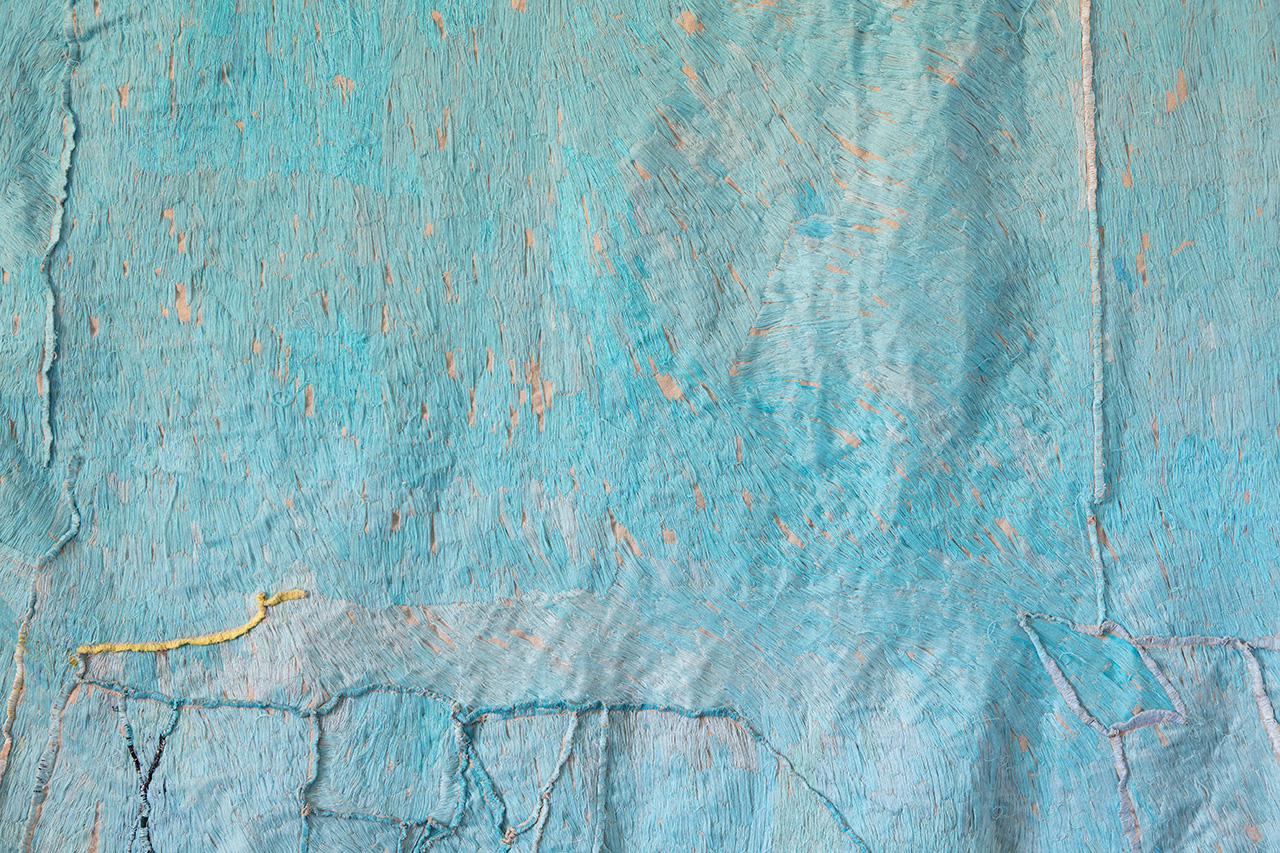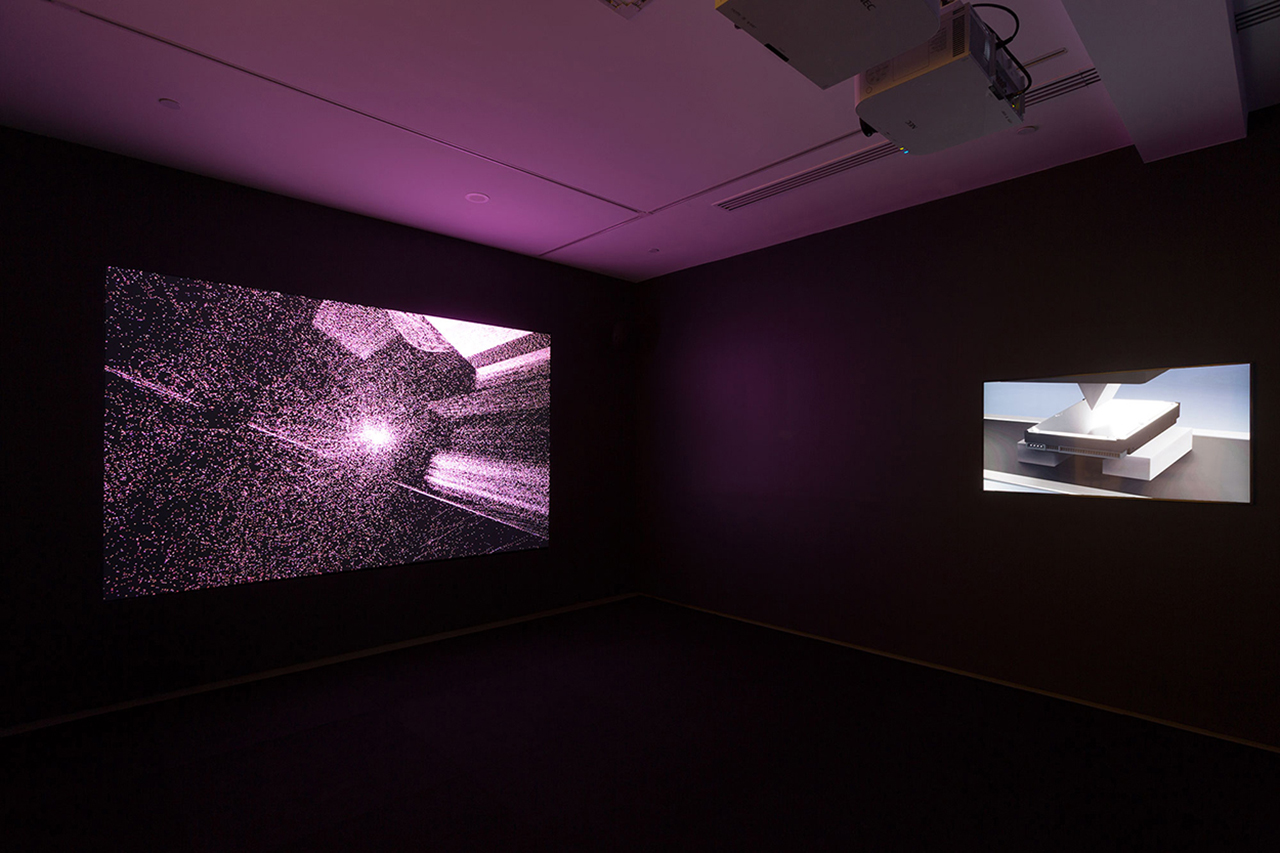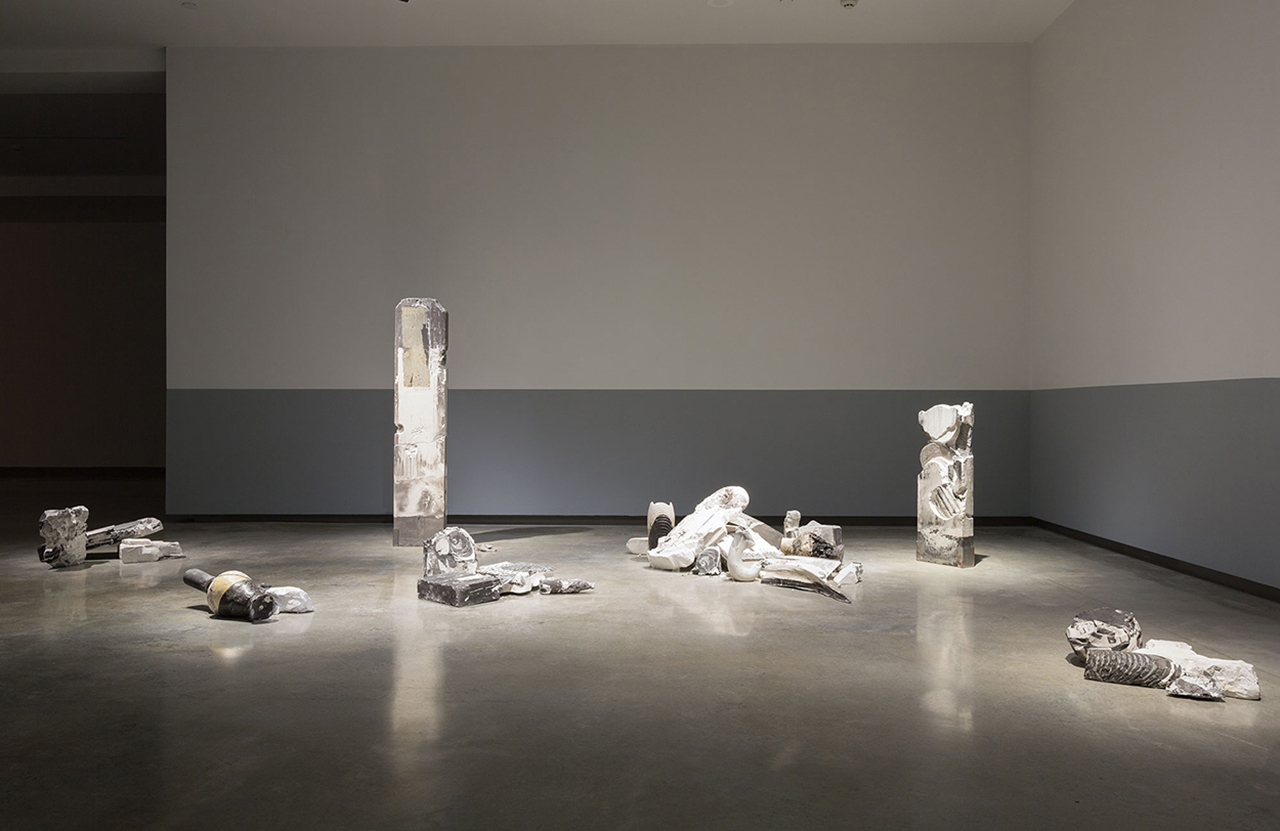News feed

Teelah George, Sky Piece (detail) 2016-17, thread, linen, bronze, oil paint
Credit: Courtesy of the artist/Museum of Contemporary Art
While on a three month artist residency in Paris, the artist Elena Papanikolakis spent time in both the Louvre Museum, where she examined Greco-Roman artefacts, and in Athens, Greece, where the architectural remnants of antiquity are archived not in the hermetically sealed collections of museums but in photographs, in memory and en plein air.
The residency, part of the Eva Breuer Travelling Art Scholarship, afforded Papanikolakis the opportunity to address head-on her own cultural narratives, drawn in part from her exposure to one of the world’s largest collections of antiquities. The resulting body of work that she created, Unbound, conflates boundaries both individual and historical, found and forged, fact and fiction through a series of 16 framed works on paper.
In Unbound, Papanikolakis splices together personal photographs with clippings from second-hand books and magazines onto new book pages, atop which she adds painterly inflections as evidence of the artist’s hand. While the pages themselves have been blown out of their original proportions, they retain many of their original’s signifiers: the placement of the image and, on occasion, its accompanying text – the font, size and caption itself – has been faithfully preserved. Over the course of a dozen or so examples, Papanikolakis’s intervention obfuscates the page, the photograph, the page and the site’s original meaning.
In one image, the planes of half a dozen (or more, perhaps, it’s hard to say) rocky escarpments converge at random within the frame; their adjoining seams are painted over, almost imperceptibly in places, with the artist’s impasto strokes colour matched perfectly to the mountainous terrain. In the lower right hand corner, Papanikolakis has included a single line of text: “Free, noisy, fickle and brilliant…”

Kynan Tan, Data Erasure, 2017, installation view, Primavera 2017: Young Australian Artists, Museum of Contemporary Art Australia, Sydney, 2017, computer-generated video, sound
Credit: Courtesy and © the artist/Jessica Maurer
Free, noisy, fickle and brilliant.
It’s as apt a summary of Primavera 2017 as you could extract from any of the eight or so works currently on display at the Museum of Contemporary Art in Sydney. Each has been contributed by a participating Australian artist – there are eight featured in this survey, all told – all of whom are aged, per the requisite parameters of Primavera, under 35-years-old. Now in its 26th edition, Primavera this year explores the theme of ‘Ancient Futures’, and considers existence, both personal and universal, in relation to the act of collecting or archiving experiences, objects, synthetic or natural phenomena. It’s a theme each artist grapples with in ways that are both explicit and, in some cases, only gestured toward with quiet complicity.
In Sky Piece, pictured above, the Perth-based artist Teelah George renders the vast West Australian sky through a painstakingly embroidered tapestry pieced together from offcuts of linen discarded from canvases made by the artist as part of her painting practice. While completing the laborious piece, George listened to the oral histories of women gathered from various archives in an effort to trace what she calls “the parallel ambiguities” shared between the historical record and visual art. It’s a staggering document of the artist’s hand. In its invocation of both personal histories and the sheer enormity of the expanse above head, it almost takes the form of a testament: witness to embroidery’s history as a storytelling device, one used predominantly by women; to the ineffectual modes of recording lived experience; and perhaps the myopia, and erasure, performed by dominant historical narratives.
Kynan Tan’s multi-channel digital video work Data Erasure contends with an altogether different archival process. The Sydney-based artist has created a simulated visual mapping of the kinds of data that each of us creates every day by virtue of the smallest gesture – say, reading these words – that plays out in a pattern that fluctuates in movement and density corresponding to the type and size of Tan’s created data. Between two screens displaying the pattern is a third, which Tan uses to project a 3D simulation of an infinite conveyor belt of hard drives being destroyed. Viewed in conjunction, the works play directly into the fear that we’ll never truly be able to erase a digital footprint that deepens with each absentminded scroll.

Nicole Foreshew, Surface Bare II, 2015, Lambda print
Credit: Courtesy and © the artist
Implicit in the inclusion of each piece is the tireless of work the Primavera’s curator Sophia Kouyoumdijan, who not only travelled across Australia, speaking to artists and curators in-person, by phone and email, but who drew from her long-standing engagement with the work of young artists amassed across her 15 years working in the industry in the process of putting together the assembled works.
“For me, the curatorial processes begin and ends with artists,” Kouyoumdijan told GRAZIA. “And thus, the theme for Primavera 2017 was drawn directly from the work of the artists. When researching, key threads started to emerge through the artists’ work – of looking to archives and collections, of using the act of collecting, of the importance of gestures and performative acts as well as a connection to earth and natural phenomena. At the core of these investigations was a potent and fundamental questioning of existence and humanity. The Primavera artists ask questions about our past and present realities, and how they feed into our future understanding. The theme also speaks to the enduring role of culture; of that which is embedded in ancient and sacred places, relics and knowledge, and how this informs our present and future realities.”
Of the eight artists included within, Kouyoumdijan considers the final artist who completed the list of eight, Adam John Cullen, as the one who has perhaps encapsulated the exhibition’s theme most keenly. His work, Certain Remnants, takes the form of a collection of sculptural objects cast from found items: think discarded op-shop finds alongside more personal objects imbued with familial significance. In the casting process, their original forms have been subsumed by the simulated processes of fossilisation. “The objects have been broken apart and arranged on the floor like an ancient ruin,” says the curator, “speaking to how objects from our past can reveal meaning in the present, like a form of contemporary archaeology.” In a sense, the excavated artefacts of Certain Remnants speak almost directly to the nearby abstractions of Papanikolakis, which conflate “imagery of Greco-Roman ancient relics and architectural ruins with places from across modern and contemporary times”, as well as the work of the Sydney-based Wiradjuri artist Nicole Foreshaw and the Perth-based multi-disciplinarian Jacobus Capone.
“In Nicole’s photographic work, we see the earth forcefully fractured open through mining processes, revealing the deep geological layers of the earth. Whilst Jacobus’s 7-channel video work depicts the artist engaging with remote arctic landscapes through momentary and durational performative gestures. Through their works we are reminded that the earth holds great meaning, knowledge and sacredness. That the stratified layers of our earth are also an archive of existence.”

Adam John Cullen, Certain Remnants, 2017, installation view, Primavera 2017: Young Australian Artists, Museum of Contemporary Art Australia, Sydney, Hydrostone, plaster, oxide, cotton, marble, limestone
Credit: Courtesy the artist and ALASKA Projects, Sydney, © the artist/Jessica Maurer
A Curator is also in many ways, says Kouyoumdijan, similar to an archivist. “By playing a role in the care, documentation, interpretation and presentation of contemporary art,” a shared affinity emerges between the two roles, and yet she sees her career not as being defined by curatorial practice but by engaging with artists at a relational level. “I am excited and driven by investing in the development of artists’ work and the sustainability of their careers,” she says. “I believe that the work of artists is central to how we experience and understand our everyday, as well as our inter-connectedness across vast borders.” It’s a role that forms part of Kouyoumdijan’s daily responsibilities in her work as the Coordinator of the Parramatta Artist Studios, something she has continued to do whilst assembling the Primavera exhibition over the course of the past year. “I have the absolute privilege of working with artists on a daily basis at PAS, of connecting with them in their studios and being privy to the ideas and processes that inform their finished works. So over the past year, Primavera has added another exciting layer of artist engagement to my professional career, and I wouldn’t have it any other way.
“All of the artists of Primavera are deeply engaged in their practices and the wider arts sectors,” continues Kouyoumdijan, speaking toward the commonalities that unite each of the participating artists across their disparate practices. “From solidly exhibiting, to engaging in studio collectives, and undertaking residencies, these are artists who are invested in their artistic practices and to unpacking crucial and intriguing ideas as well as engaging with the work of their artist peers. Many of the Primavera artists have undertaken career-changing internationally residencies in places such as Iceland, Morroco and Paris. These are artists who understand that they do not make work in isolation, but in fact, that they are part of a greater globalised dialogue and are directly engaged with the building and dissecting of the culture of our everyday and every place.”
Primavera 2017 is exhibition now at the Museum of Contemporary Art. You can find out more information here.
Tile and cover image: Jacobus Capone, Dark Learning 2015, 7-channel video, high-definition, colour, sound 22:21 minutes/Courtesy of the artist










